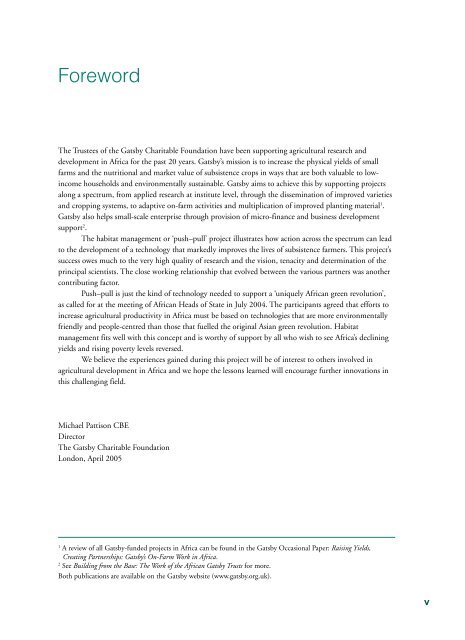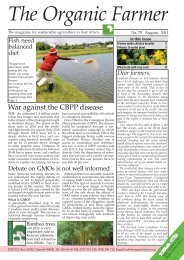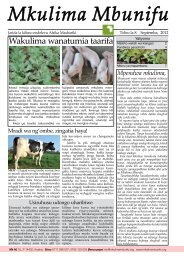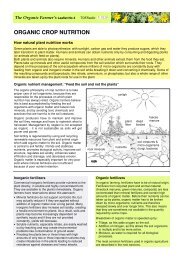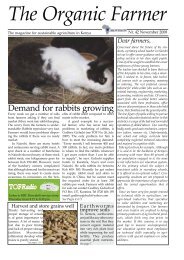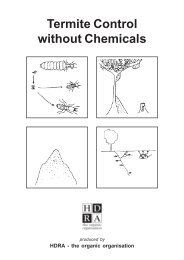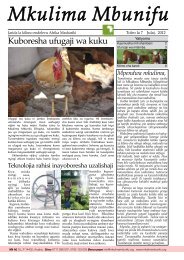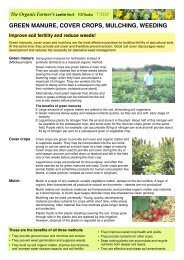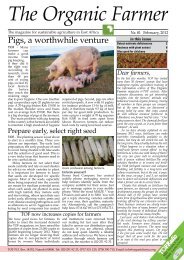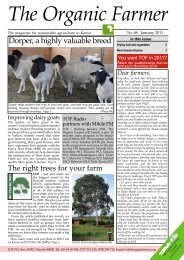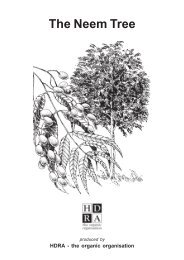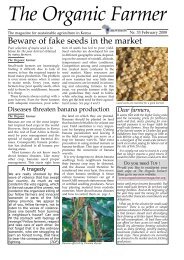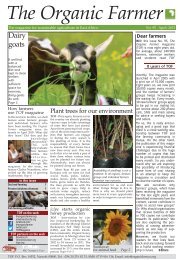Push-Pull Technology and the African Farmer - Infonet-Biovision
Push-Pull Technology and the African Farmer - Infonet-Biovision
Push-Pull Technology and the African Farmer - Infonet-Biovision
Create successful ePaper yourself
Turn your PDF publications into a flip-book with our unique Google optimized e-Paper software.
Foreword<br />
The Trustees of <strong>the</strong> Gatsby Charitable Foundation have been supporting agricultural research <strong>and</strong><br />
development in Africa for <strong>the</strong> past 20 years. Gatsby’s mission is to increase <strong>the</strong> physical yields of small<br />
farms <strong>and</strong> <strong>the</strong> nutritional <strong>and</strong> market value of subsistence crops in ways that are both valuable to lowincome<br />
households <strong>and</strong> environmentally sustainable. Gatsby aims to achieve this by supporting projects<br />
along a spectrum, from applied research at institute level, through <strong>the</strong> dissemination of improved varieties<br />
<strong>and</strong> cropping systems, to adaptive on-farm activities <strong>and</strong> multiplication of improved planting material 1 .<br />
Gatsby also helps small-scale enterprise through provision of micro-finance <strong>and</strong> business development<br />
support 2 .<br />
The habitat management or ‘push–pull’ project illustrates how action across <strong>the</strong> spectrum can lead<br />
to <strong>the</strong> development of a technology that markedly improves <strong>the</strong> lives of subsistence farmers. This project’s<br />
success owes much to <strong>the</strong> very high quality of research <strong>and</strong> <strong>the</strong> vision, tenacity <strong>and</strong> determination of <strong>the</strong><br />
principal scientists. The close working relationship that evolved between <strong>the</strong> various partners was ano<strong>the</strong>r<br />
contributing factor.<br />
<strong>Push</strong>–pull is just <strong>the</strong> kind of technology needed to support a ‘uniquely <strong>African</strong> green revolution’,<br />
as called for at <strong>the</strong> meeting of <strong>African</strong> Heads of State in July 2004. The participants agreed that efforts to<br />
increase agricultural productivity in Africa must be based on technologies that are more environmentally<br />
friendly <strong>and</strong> people-centred than those that fuelled <strong>the</strong> original Asian green revolution. Habitat<br />
management fits well with this concept <strong>and</strong> is worthy of support by all who wish to see Africa’s declining<br />
yields <strong>and</strong> rising poverty levels reversed.<br />
We believe <strong>the</strong> experiences gained during this project will be of interest to o<strong>the</strong>rs involved in<br />
agricultural development in Africa <strong>and</strong> we hope <strong>the</strong> lessons learned will encourage fur<strong>the</strong>r innovations in<br />
this challenging field.<br />
Michael Pattison CBE<br />
Director<br />
The Gatsby Charitable Foundation<br />
London, April 2005<br />
1<br />
A review of all Gatsby-funded projects in Africa can be found in <strong>the</strong> Gatsby Occasional Paper: Raising Yields,<br />
Creating Partnerships: Gatsby’s On-Farm Work in Africa.<br />
2<br />
See Building from <strong>the</strong> Base: The Work of <strong>the</strong> <strong>African</strong> Gatsby Trusts for more.<br />
Both publications are available on <strong>the</strong> Gatsby website (www.gatsby.org.uk).<br />
v


